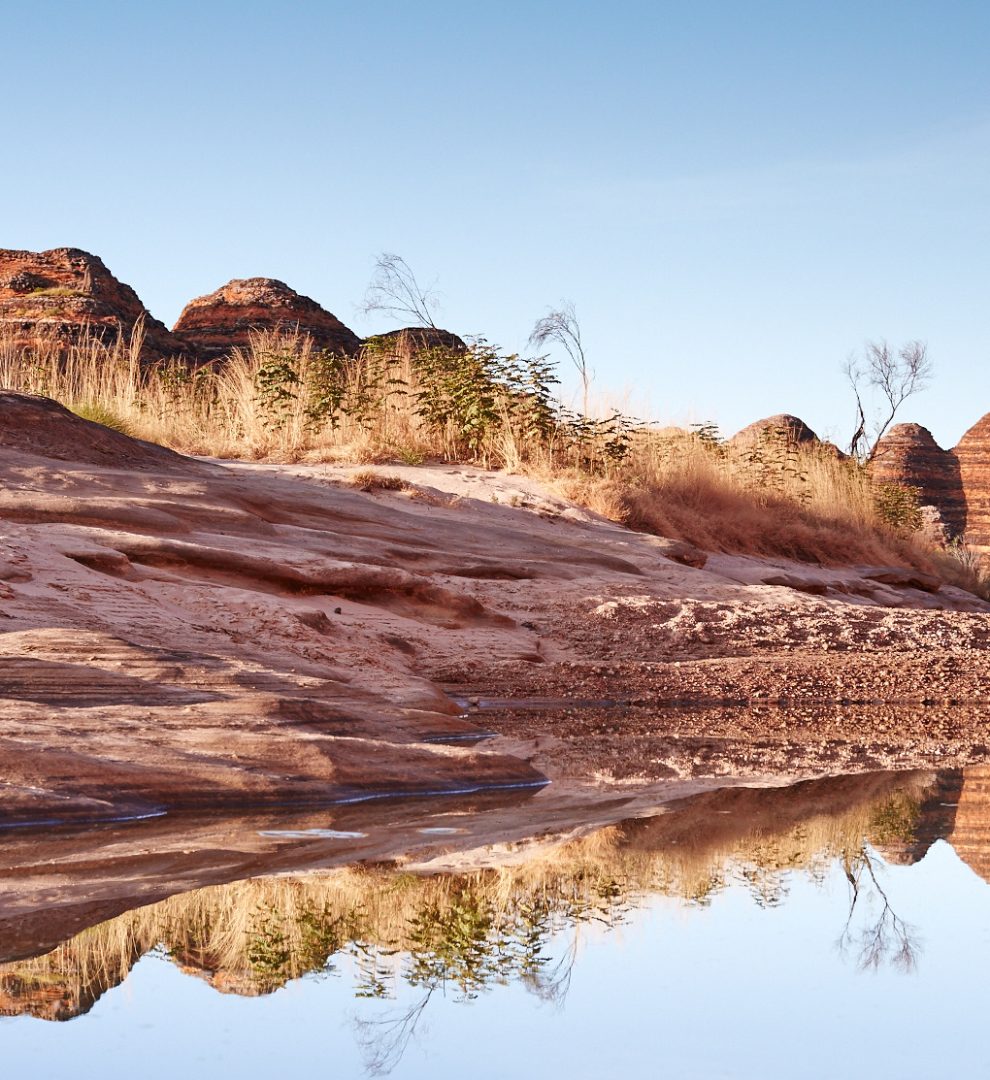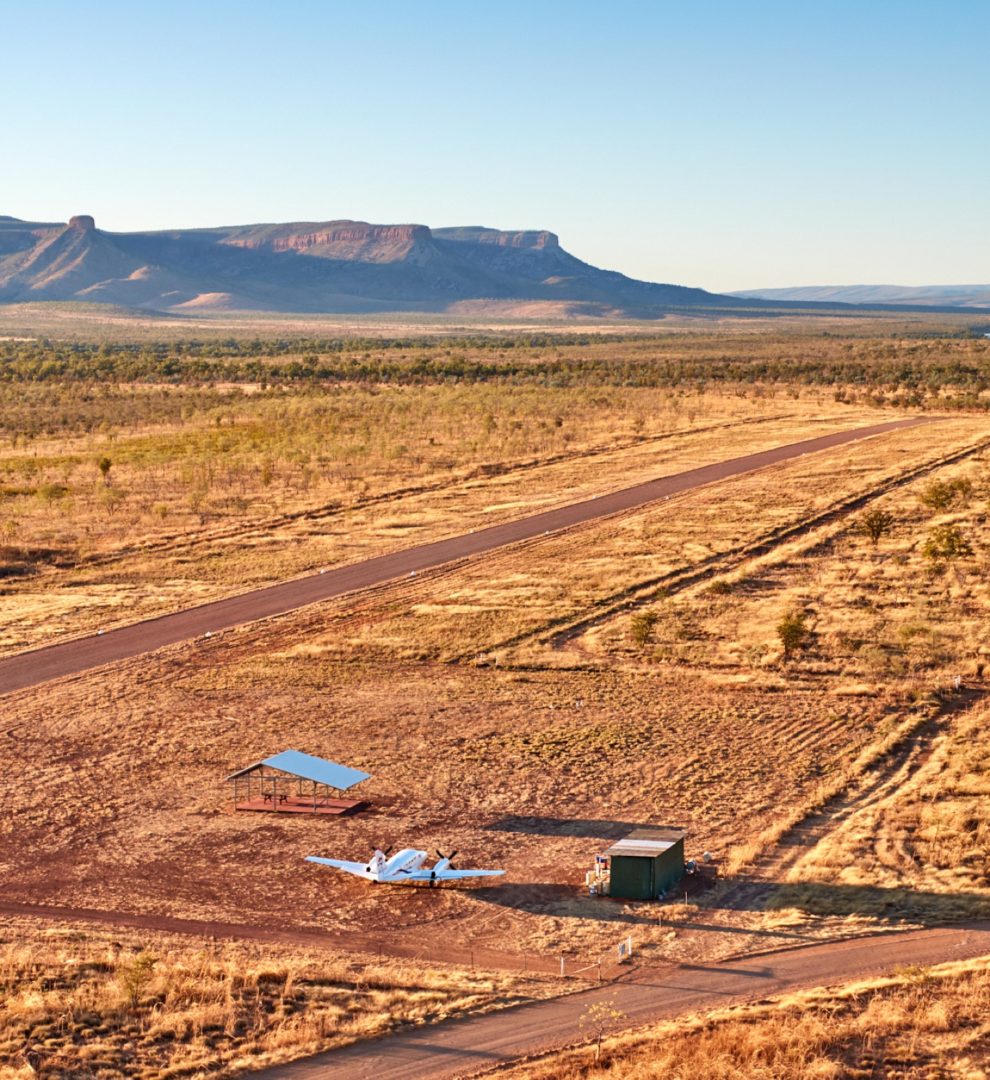


While we still include outback adventures to the more popular destinations like Uluru and Broome, our outback trips in australia focus on taking you to the little known and seldom visited locations like Cape York, Gulf country, Arnhem Land and the Pilbara.
These are truly authentic areas that others struggle to get to wasting countless hours driving, so if it’s experiences like fishing for a 1 metre-plus Barramundi, discovering ancient rock art sites or having a swim under a beautiful, fresh waterfall in the remote Kimberley region that you’re searching for – we have the tour for you.
Do You Have Something In Mind?

Air Adventure has been specialising in small group, outback adventures since 1977.
For most people embarking on outback trip in Australia is daunting due to the sheer size of our country; meaning countless hours are spent driving rather than exploring.
For 48 years’, we have been defeating the tyranny of distance in this large scale landscape by flying our private aircraft to make the Australian outback easily accessible. We enable you to see more and get you right to the heart of remote destinations, some of which are not even accessible by road.
Discover Outback Holidays
Owned by Ross and Jane Fargher, this iconic outback pub has been licensed since the 1800s. Facing out to the west, where the main road used to go - a sunset and a 'Fargher Larger' is an experience you'll never forget. Within the hotel, you will be pleasantly surprised with tasteful modern design, while highlighting the heritage of this historic stone pub. Another surprise is the cuisine, inspired by native ingredients the Prairie has gained a solid reputation for their outback menu. The 'feral mixed grill - FMG' and quandong crumble will not only excite your palate but give you a story to tell.
The colossal Jim Jim Falls is Kakadu’s biggest waterfall and has graced many calendars, books and television programs and is a must see for all visitors to Kakadu National Park. Here you’ll be struck by the enormity of the surrounding cliffs. At 200m high it’s also taller than all the waterfalls at Litchfield and Nitmiluk National Parks in the Northern Territory. During the tropical summer, heavy rains fall across Kakadu submerging vast tracts of land and fuelling these massive falls. The only way to see Jim Jim during this time is by air. The amount of water flowing over Jim Jim Falls depends on seasonal conditions, but a sheer drop of 220m is always an awesome sight, with or without water tumbling over the edge of the cliff!
Everyone has heard of Kakadu, but, not many have heard of Mary River National Park. The best part about Mary River is it offers everything Kakadu does without the crowds. The region has so much to offer and is teeming in wildlife and thriving wetlands.
Bullo River Station is in the northwestern corner of the Northern Territory near the Western Australian border. Encircled by the coffee coloured waters of the Victoria River and rugged hills inscribed with Aboriginal rock art, this vast property is not only home to around 9000 Brahman-cross cattle but also a stunning variety of local fauna.
Situated in the northwest corner of Arnhem land and adjacent to Kakadu National Park and Cobourg Peninsula in Australia's Northern Territory, lies a vast sub-tropical savannah that has been described as a national treasure trove depicting ancient human occupation, and a pristine wilderness area hosting myriad ecosystems and wildlife inhabitants. Mount Borradaile region of Arnhem land has breathtaking scenic views of river systems, floodplains and the Arnhem land Escarpment. The area is home to more than 240 species of birds, the rare Leichardt and frill-necked lizard, giant crocodile and water buffalo. Recorded on walls and inside caves in the area are some of the most colourful, prolific and oldest examples of rock art to be found anywhere in the world.
The 'Tip' of Cape York is spectacular and not somewhere everyone gets to say they've been! After an aerial orbit of the 'Tip', your local guide will help put a tick on your 'bucket list' as you set foot on this significant geographical landmark. It's staggering to comprehend the size of this country as you stand beside a sign that informs you that you've reached the most northern point of the Australian continent - simply mind boggling. Pajinka, is the Aborignal name for the land at the 'Tip', and its turquoise waters and long sandy beach is your reward after braving the journey to reach it. You will be constantly surprised at the diversity of the landscape in this part of Far North Queensland. It's dramatic with craggy rocks, rough waters and currents clashing. A humbling experience for all that are lucky enough to venture here.
The Great Australian Bight is one of the most pristine ocean environments left on Earth. Flanked by the Nullarbor and the longest continuous sea cliffs in the world, the Bight is a haven for whales, fish, birds, marine mammals, plants life and an array of invertebrate ecosystems. The Marine Park is a unique environment that protects a globally important calving and gathering area for endangered southern right whales. Whales gather inshore here in winter, creating opportunities for whale watching - imagine seeing as many as 100 whales at once. The Bunda Cliffs are located between two of Australia’s most impressive natural attractions: the Nullarbor Plain and the Great Australian Bight. The limestone cliffs are a naturally beautiful landmark in one of Australia’s most isolated places. The cliffs were formed when Australia separated from Antarctica approximately 65 million years ago and are made up of fossiliferous limestone called Wilson Limestone. You will be amazed as you fly over these dramatic cliffs, which are between 60 and 100 metres high (200 to 400 ft) with a sheer drop to the ocean.